Submitted by WA Contents
Santos Bolívar's rammed-earth hotel blocks are raised on inclined mirror bases in Mexican landscape
Mexico Architecture News - May 22, 2019 - 06:24 18157 views
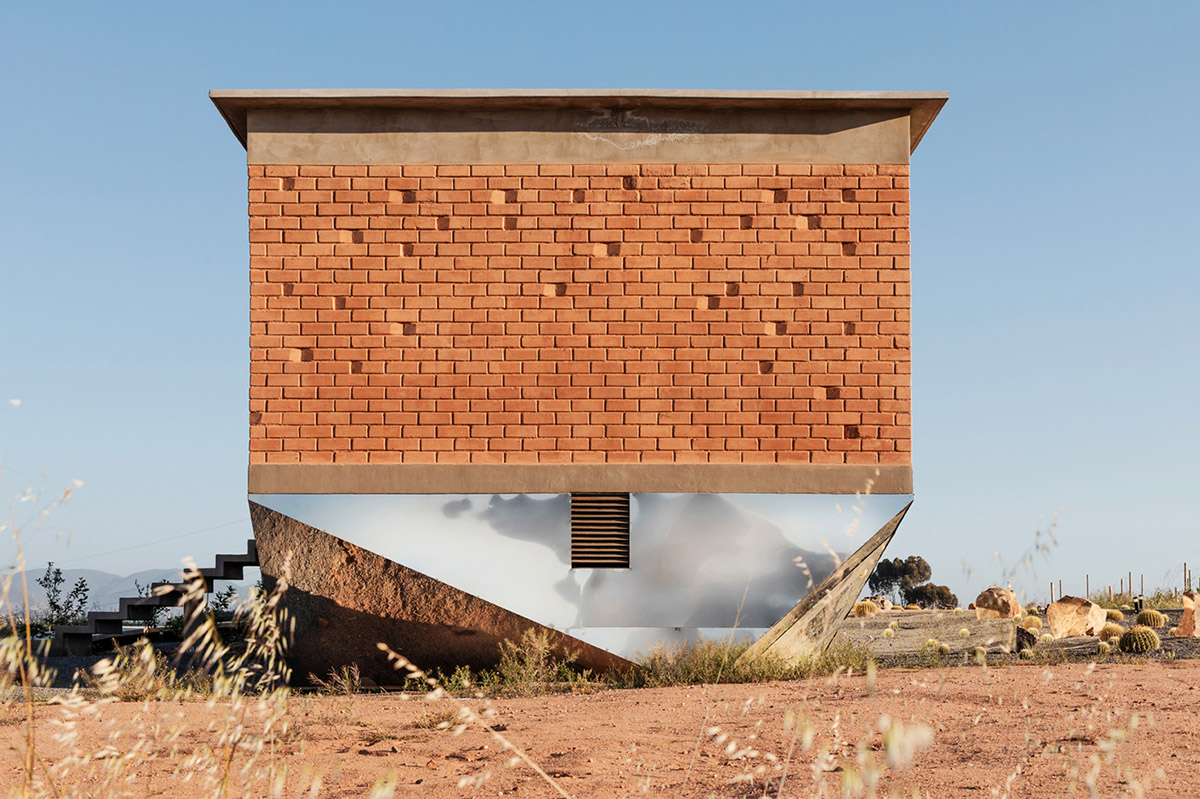
Mexican architecture firm Santos Bolívar has completed a new kind of hotel typology in Mexican landscape, shaped through the geographical and natural qualities of the context.
Situated in an arid landscape of Valle de Guadalupe, the up and coming wine region in Mexico's Baja California, the site is not only an increasingly popular tourist destination but also known being an example of a permanent culture of respect and balance with the ecosystem from its inhabitant to the building.

Called Bed & Breakfast Santulan, the the architects developed a new hotel typology, titled "Santulan". Santulan means is "balance" in hindi, which was the concept used for the development of the project that seeks to be inclusive in this arid landscape to stay and relax.
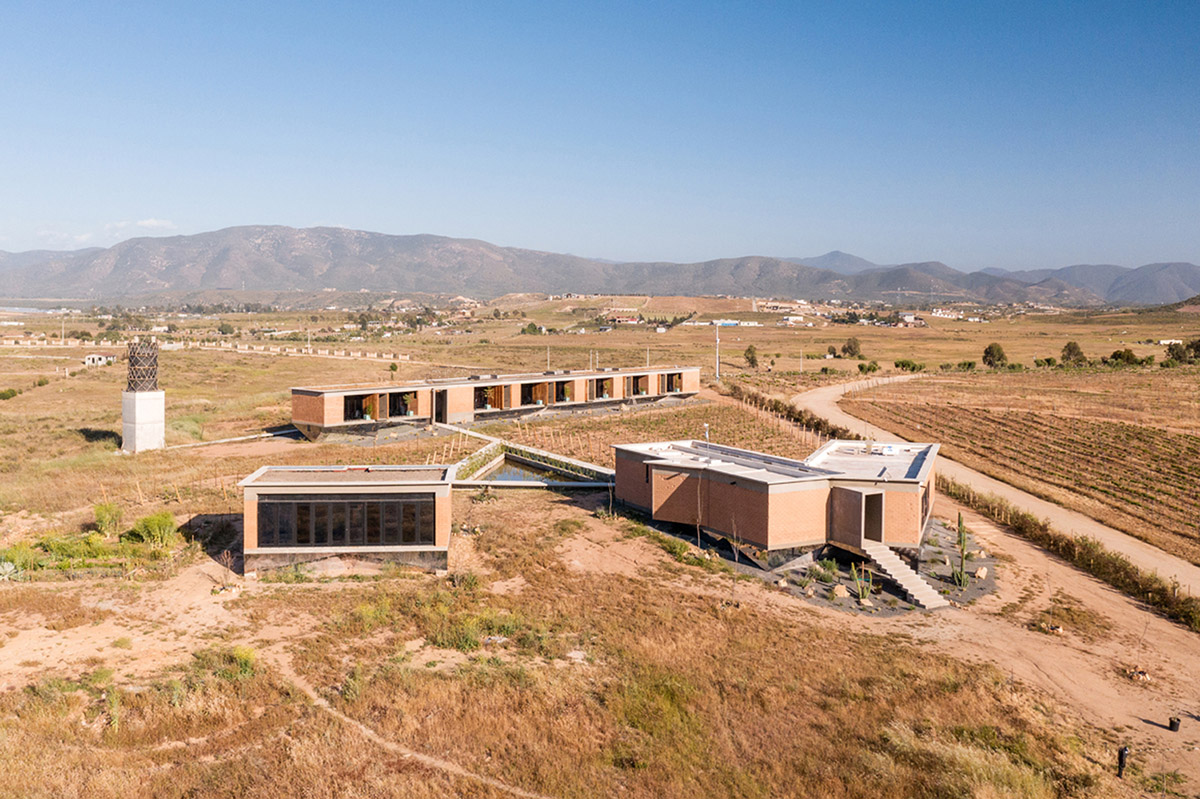
"We wanted to break with the architectural typology of a hotel that develops its services within a same volumetric body, after incessantly analyzing the site and its geographical and natural qualities we made the decision to project its architectural program in different buildings interconnected by means of walkways that interact directly with nature and are architects of an invitation to live different spiritual and architectural experiences," said Santos Bolívar in its project description.
"Attempting to make these walkers the result of the analysis of the traces of the OM mantra symbol, as part of an integral design that seeks the balance between architecture, nature, mind and spirit."
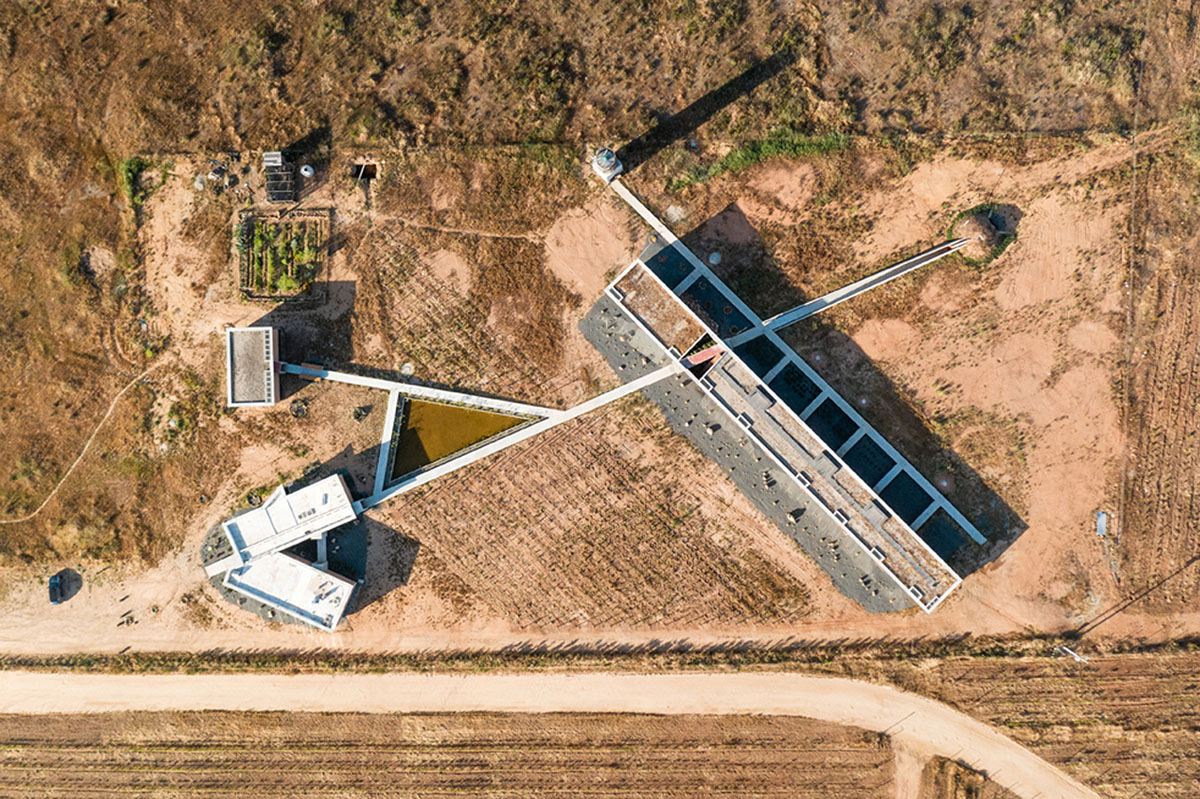
The project, covering a 1000-square-metre area, was built by benefiting from the natural sources that occur in that region. The architects used multiple eco-technologies that include walls of BTC (block of compacted earth), wetland (grey water reuse system), fog catcher tower to capture mist water, green roofs with low maintenance endemic plants, Organic orchard, Xeriscaping (respect for the local vegetation) and a natural cross ventilation system.
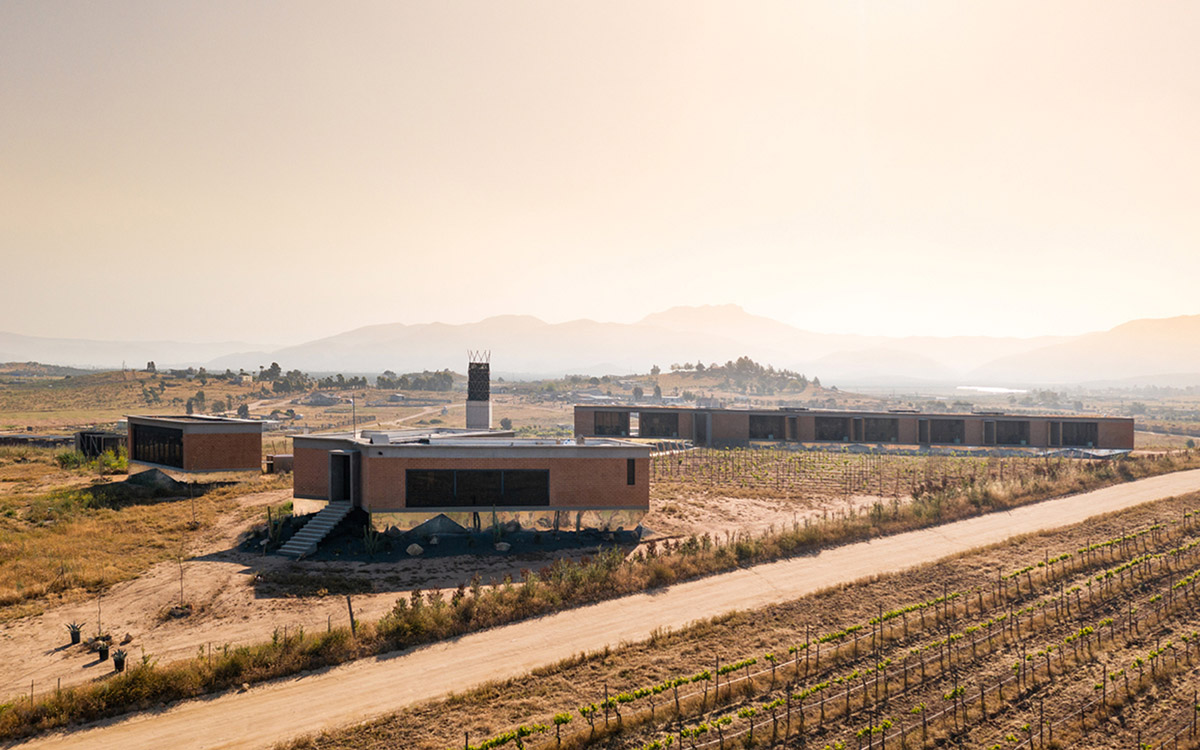
The hotel blocks are comprised of 5 building that are distributed on the property. The studio used a network of different paths and walkways to make the visitors circulate in the nature freely.
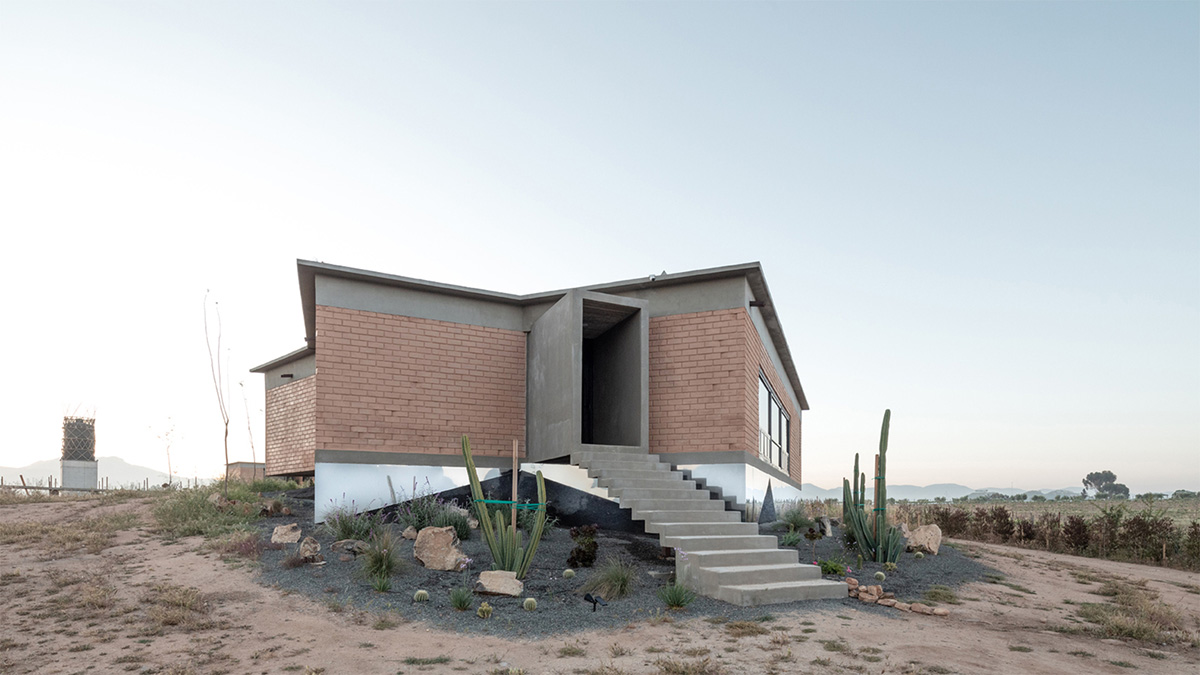
A volume in "V" is the main access to the whole building that captures the overhead light and frames the surrounding vine landscapes. The V-shaped building is also the starting point of the central route of the project, this volume includes a living room, dining room and communal kitchen with the purpose of developing interaction and coexistence among guests, also has a small art gallery to promote local talent, bathrooms, utility room, warehouse and administration office.
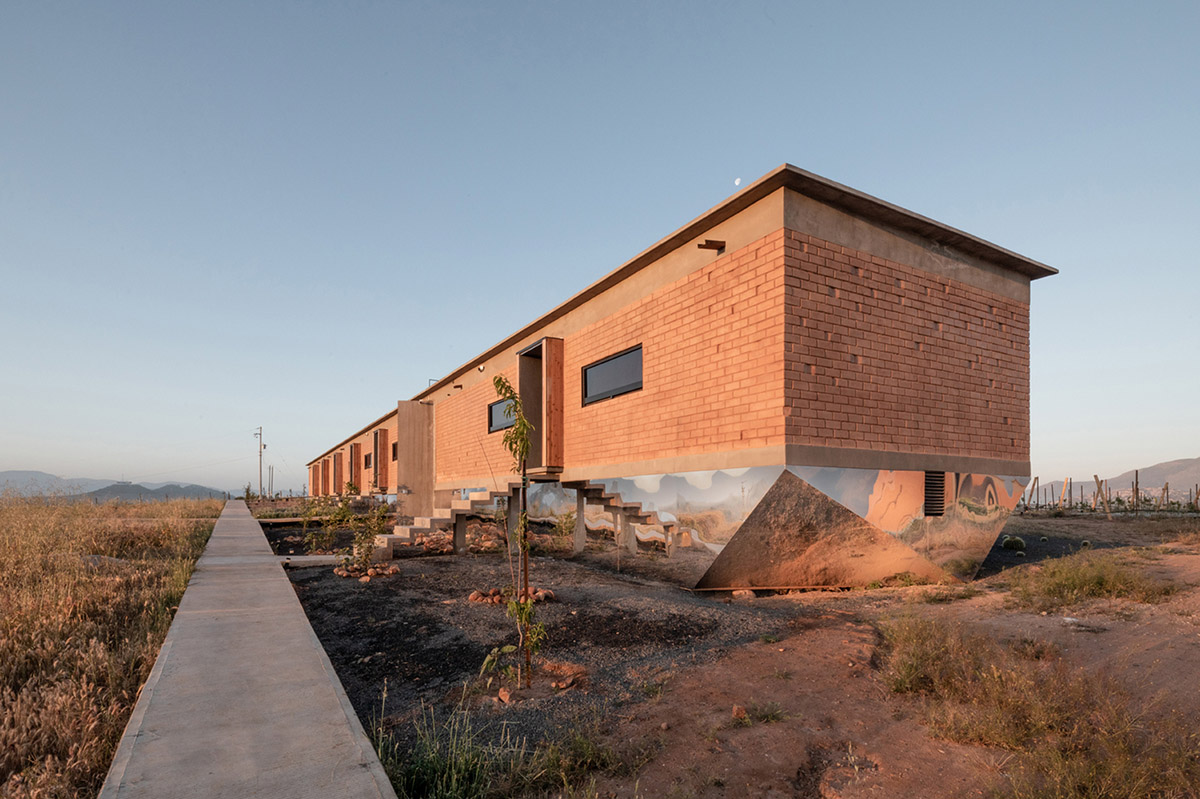
Another rectangular volume opens onto an imposing view to the west of the property, it is a space that houses the practice of yoga for the physical and mental connection.

The main building is a horizontal volume that blends with its landscape surrounded by hills of the valley and which has an orientation referenced to a majestic mountain full of energy and the most sacred for the Kumiais, one of the main ethnic groups of the region, this volume houses 8 individual bedrooms with bathroom, terrace, garden and a bedroom for the handicapped.
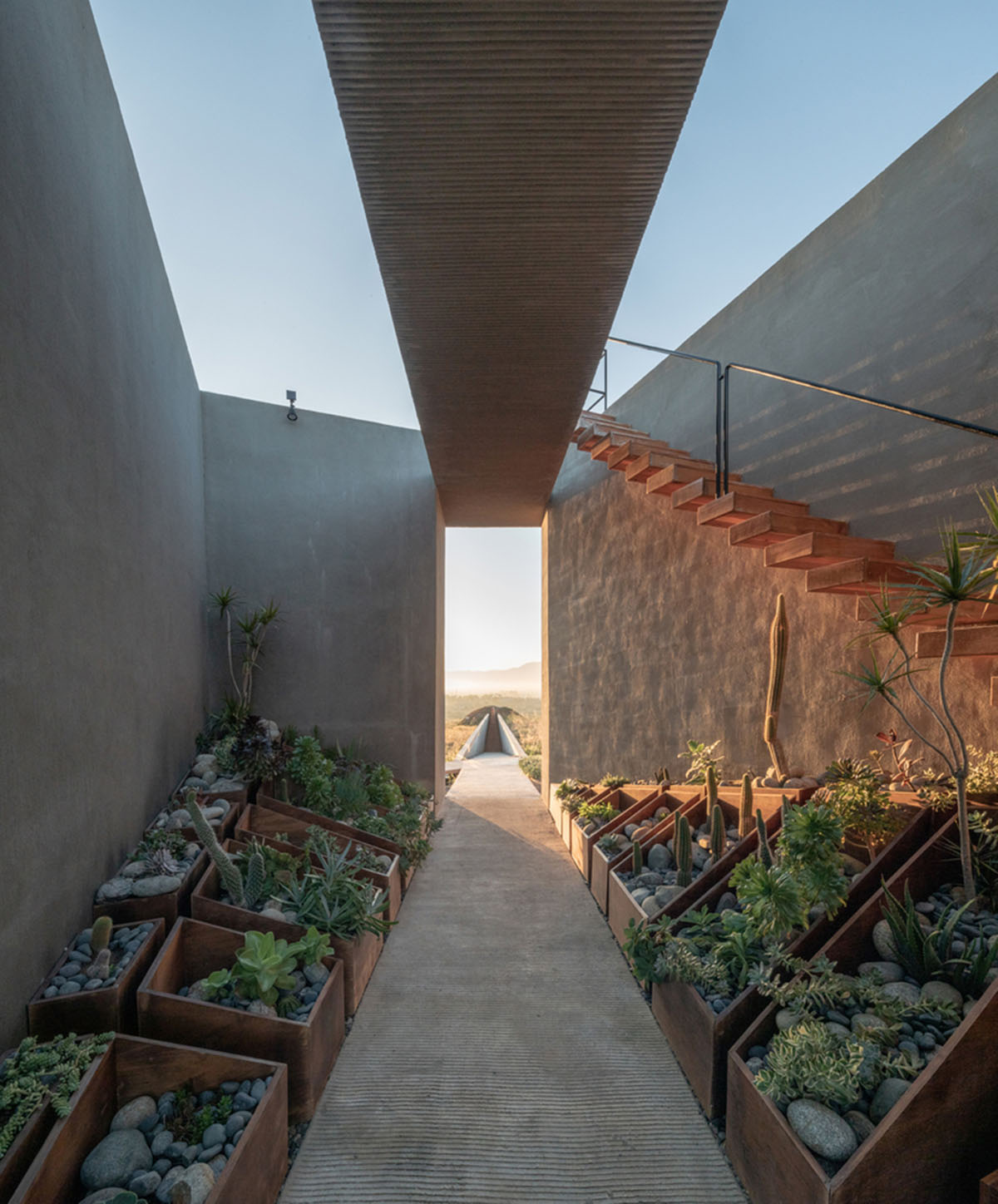
This last room has its own kitchen and a ramp that provides easy access to all the spaces. It also offers guests a green roof with wooden terraces to enjoy the incredible sunsets and the starry nights of the Guadalupe Valley.
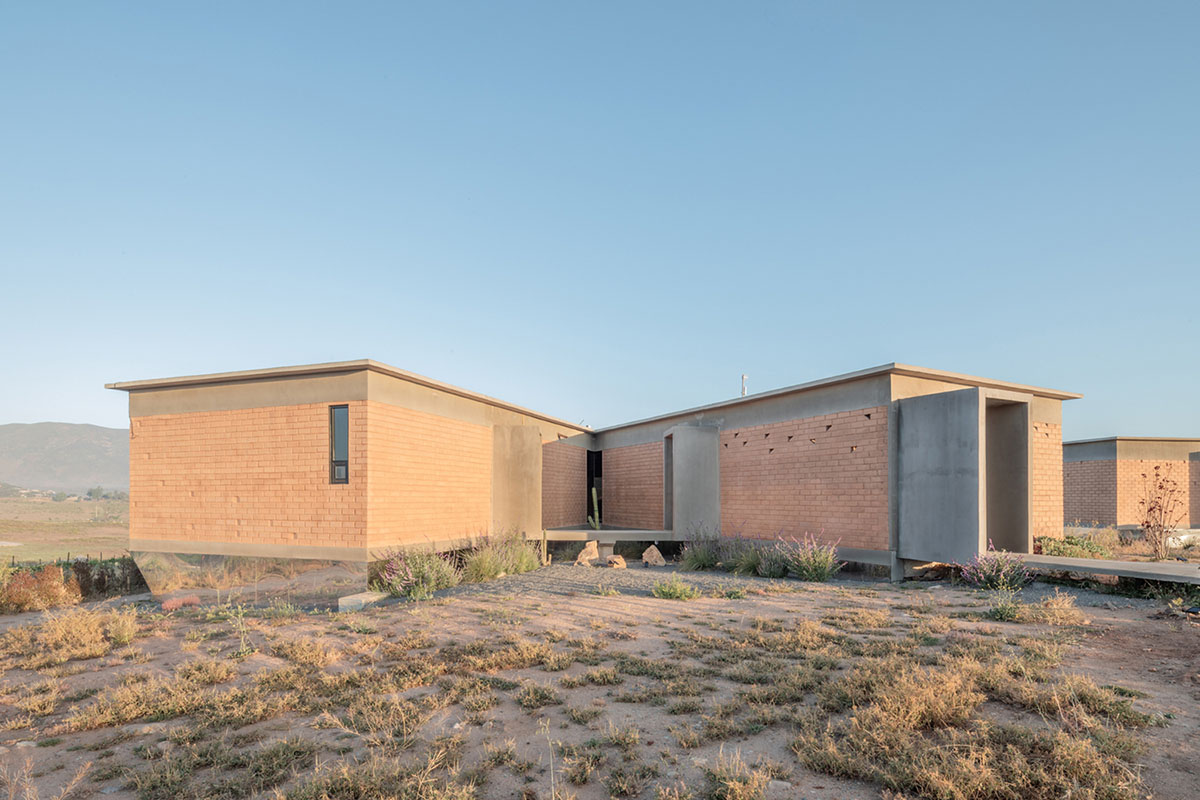
The main route ends in a straight and half-buried walkway of 30m in length, with 2 vertical and inclined concrete walls parallel to a triangular access that takes visitors into a geodesic wooden dome that has the function of being a space for meditation.
"We develop santulan with the firm idea of showing the importance of Architecture and its function, for the good direction of society - nature," added the architects.
"We develop santulan with the firm idea of showing the importance of Architecture and its function, for the good direction of society - nature."
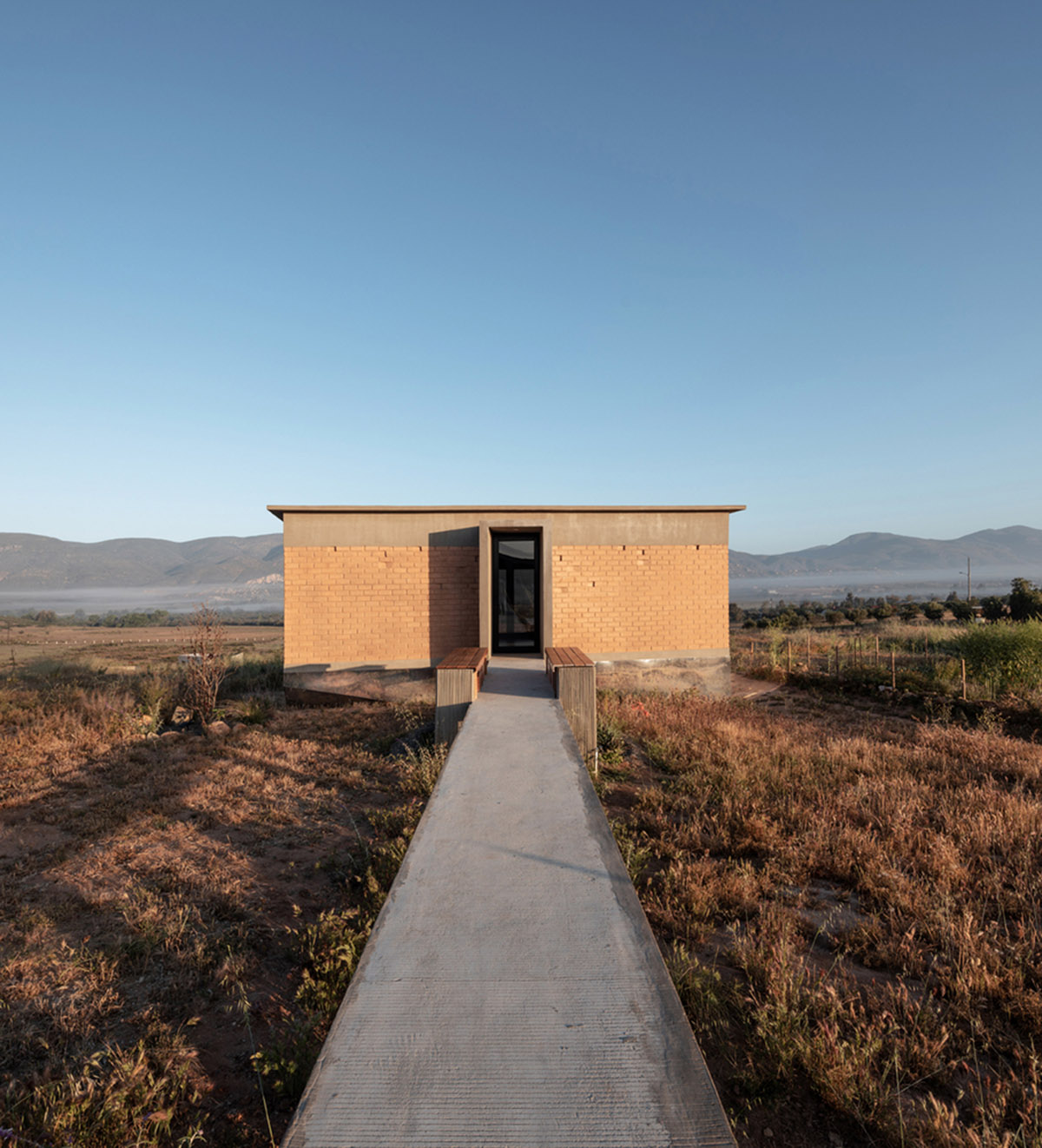
The buildings are raised on inclined bases that has a mirror effect in the landscape. Thanks to these inclined bases, the buildings touch the ground on one line to leave the minimum footprint on the landscape. All cluster of units are made of rammed-earth walls.
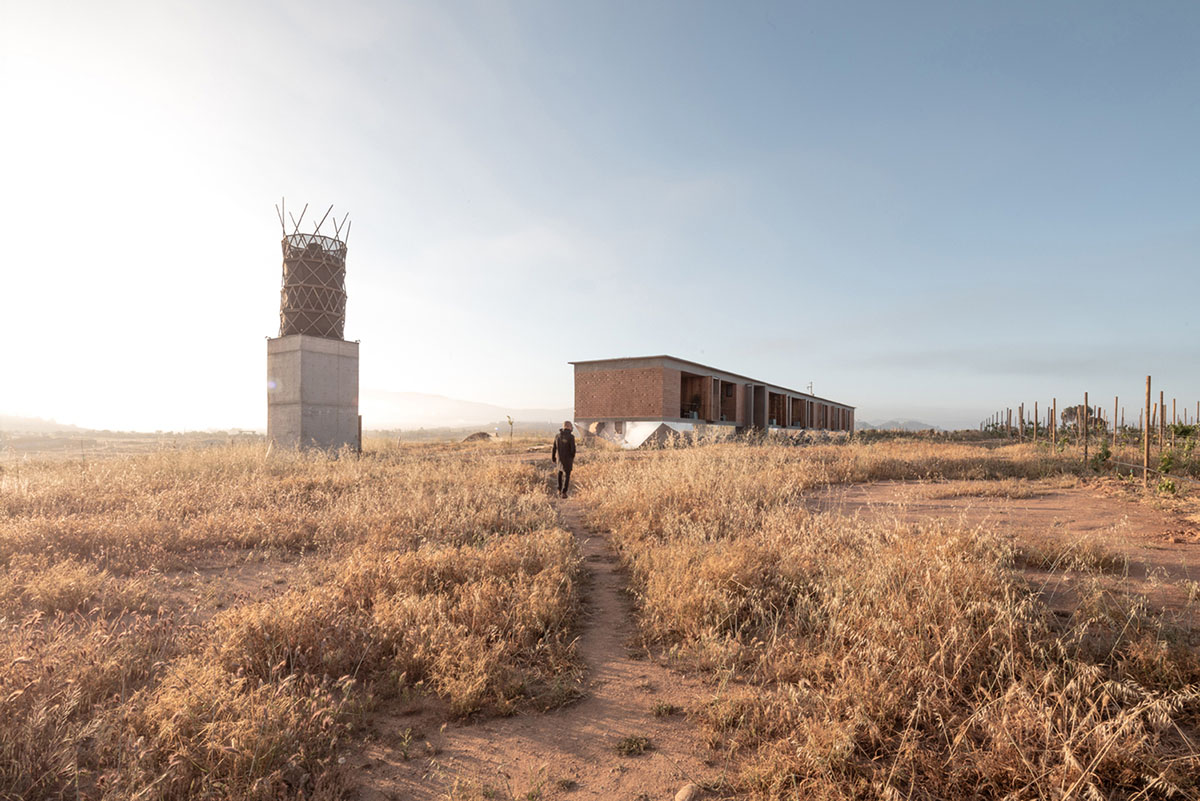
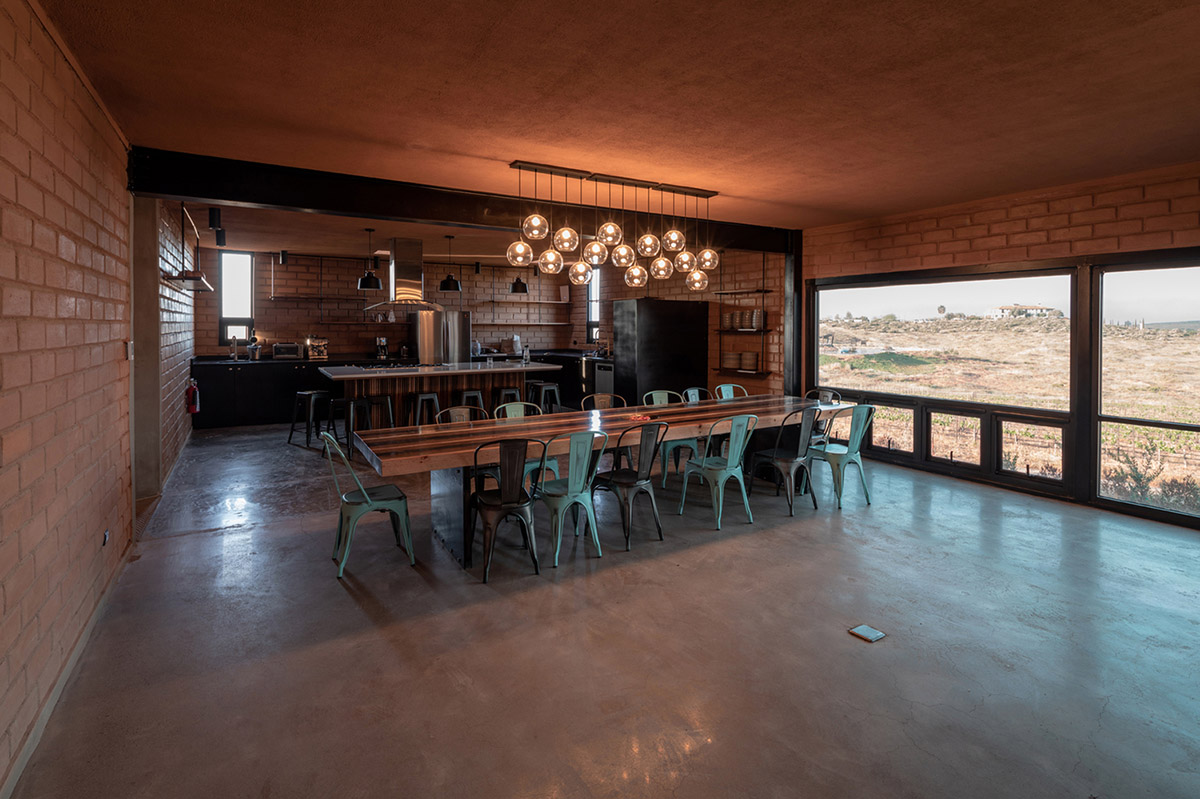

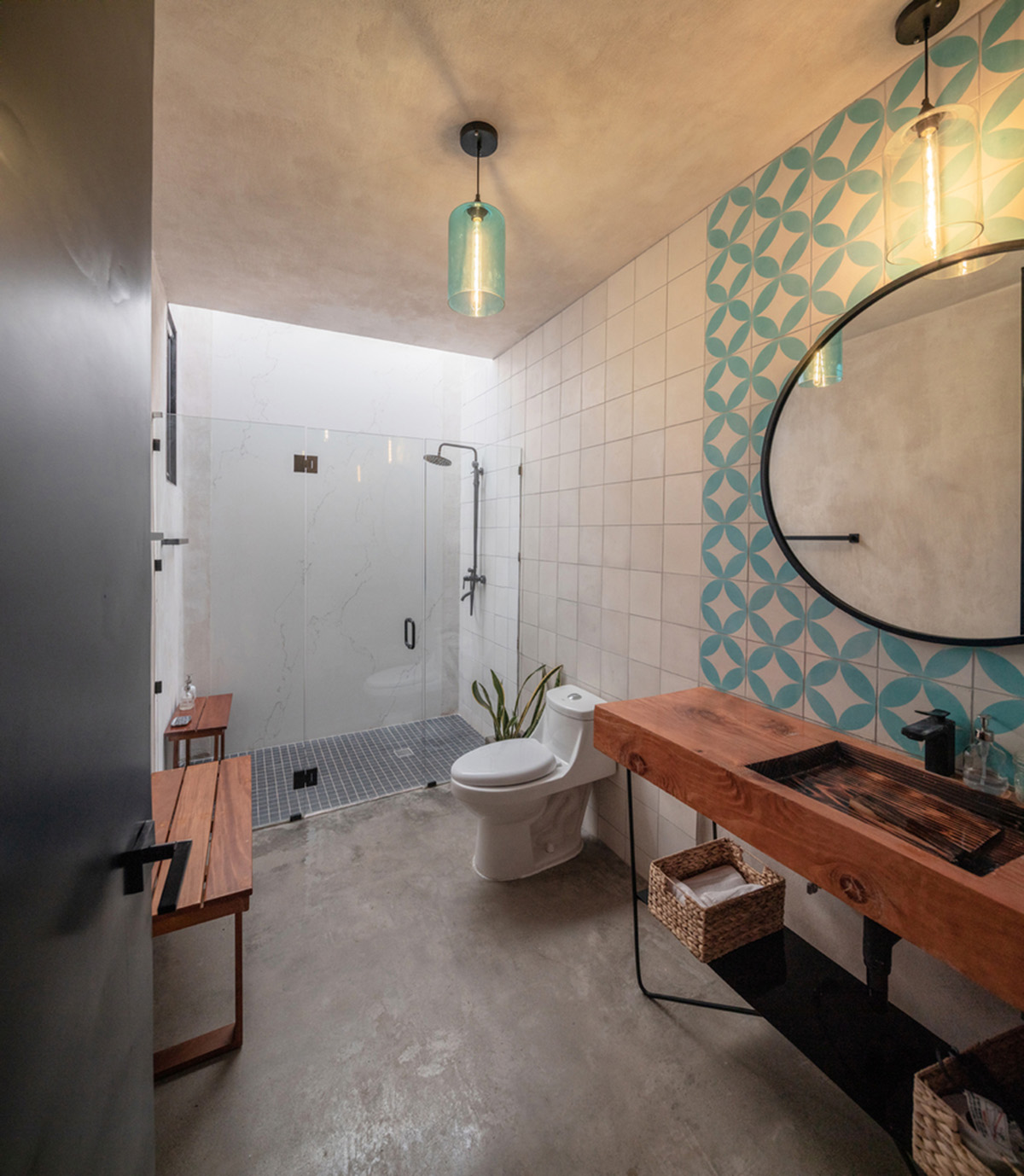
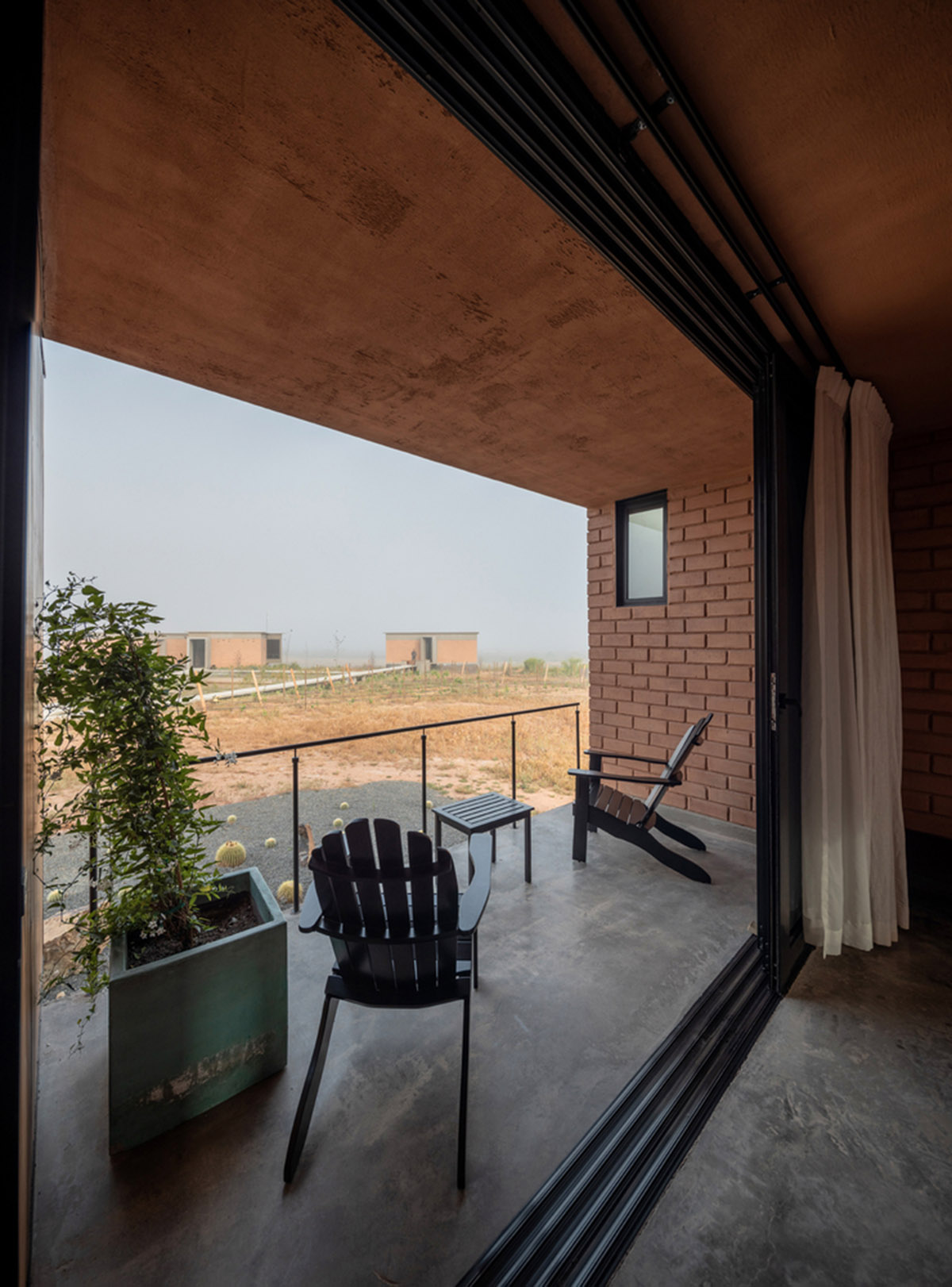
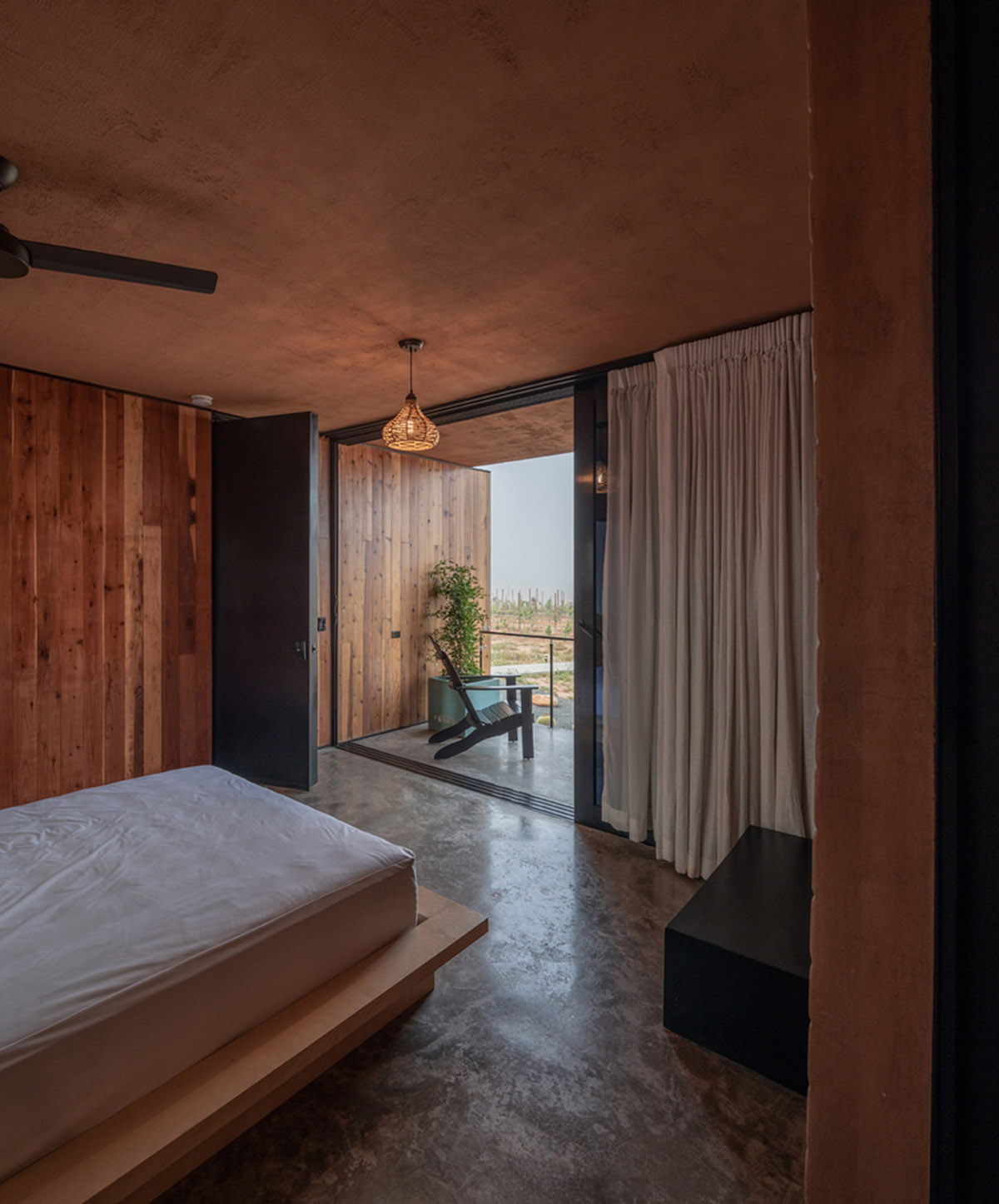
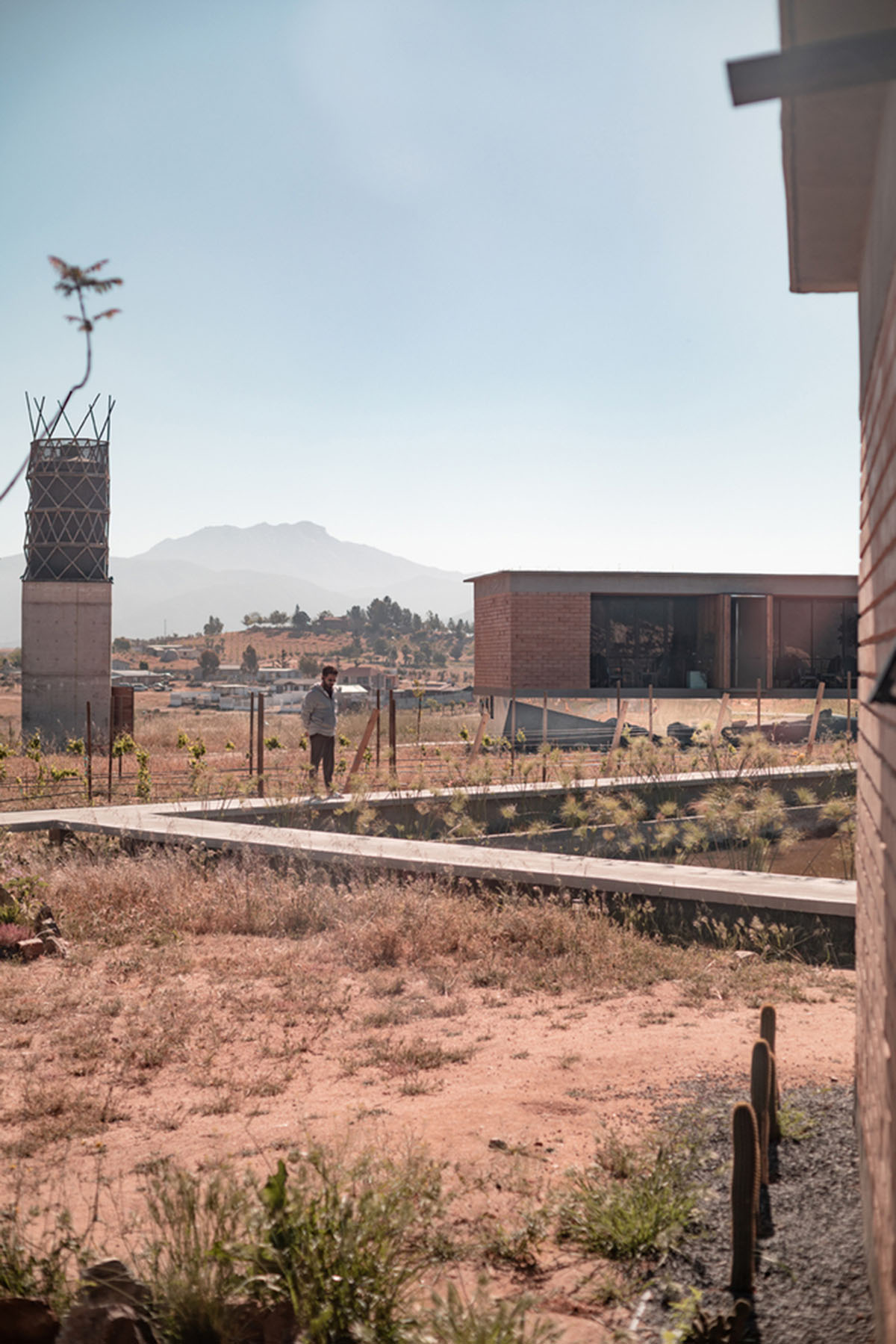
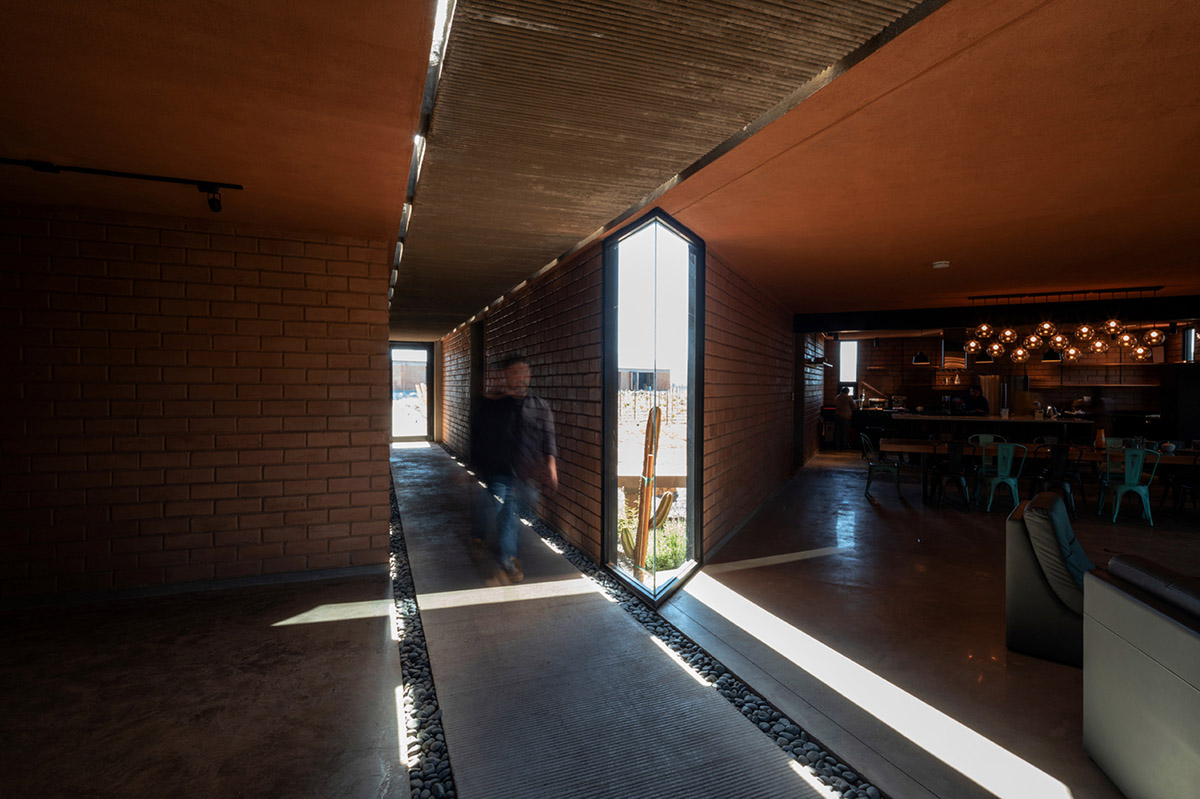
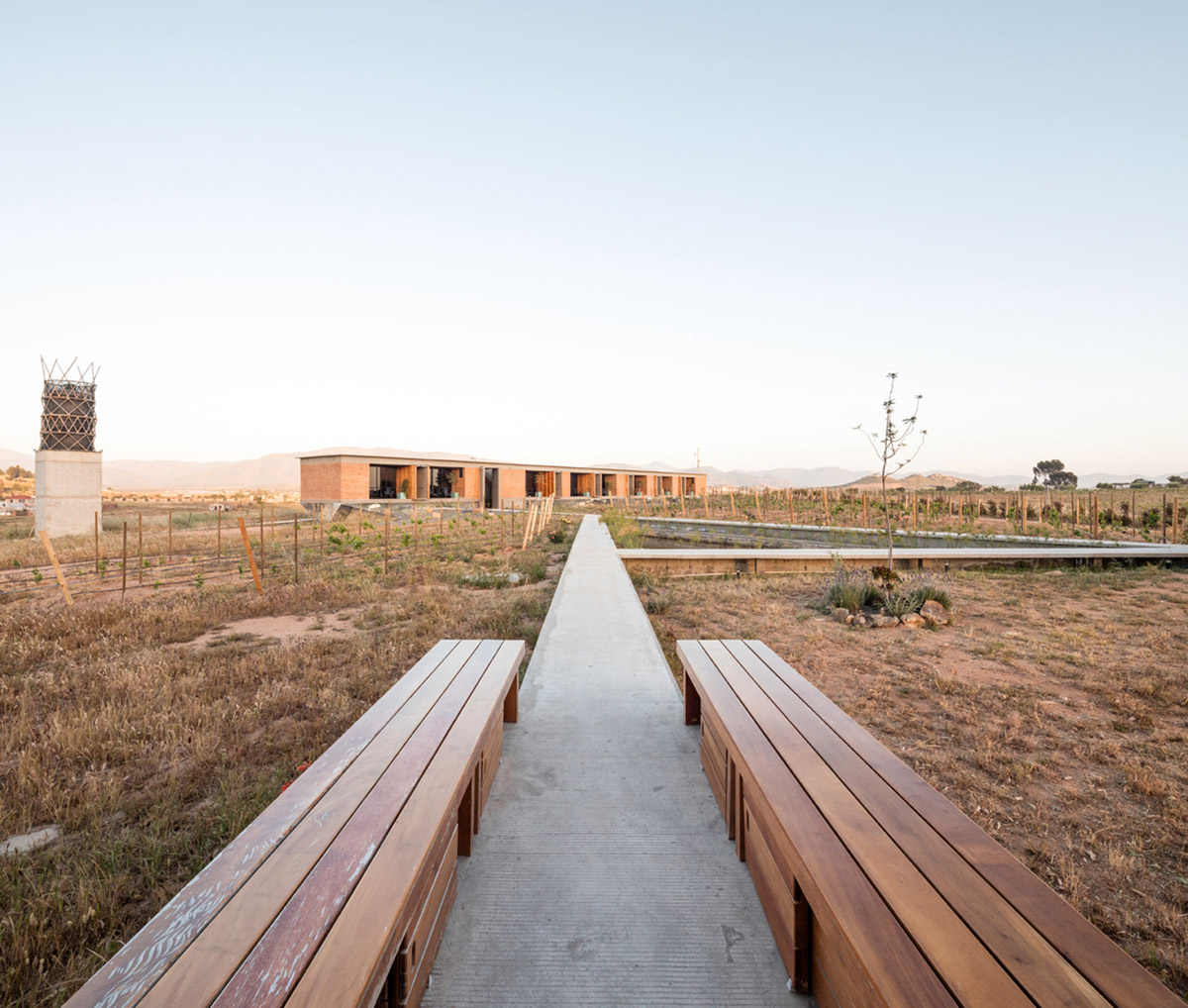
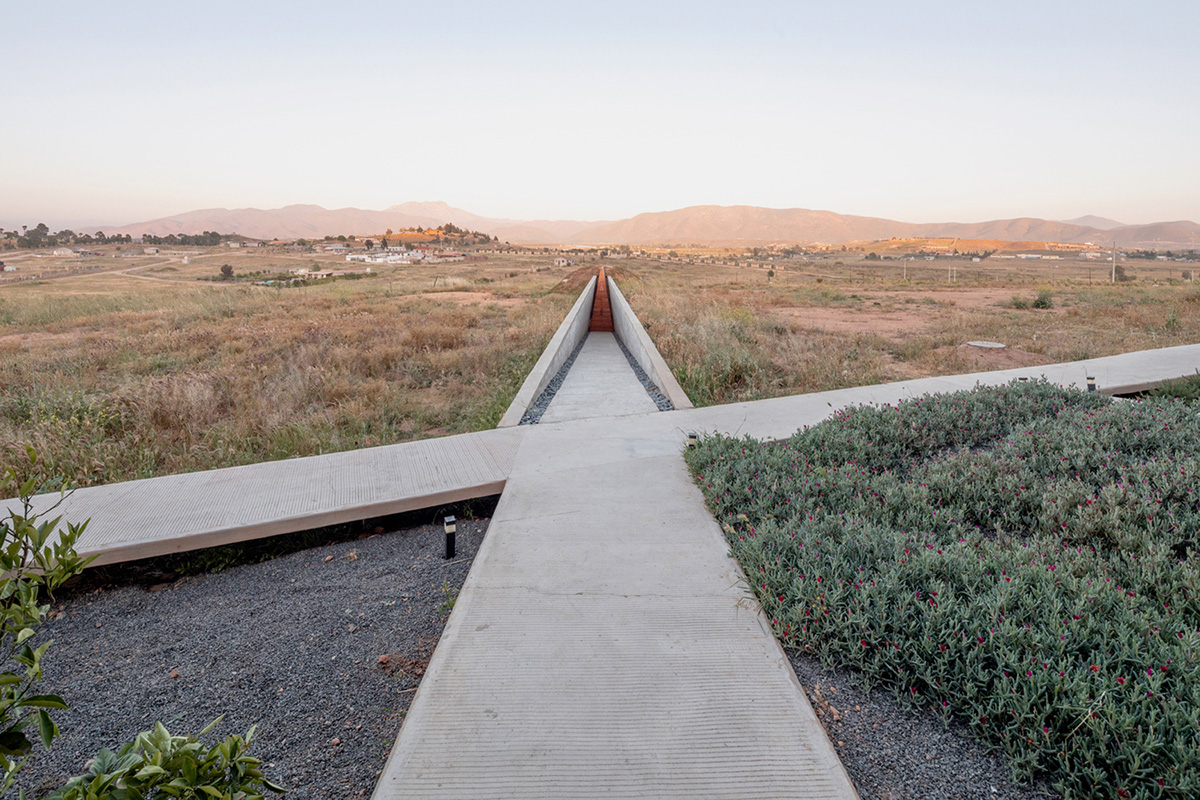
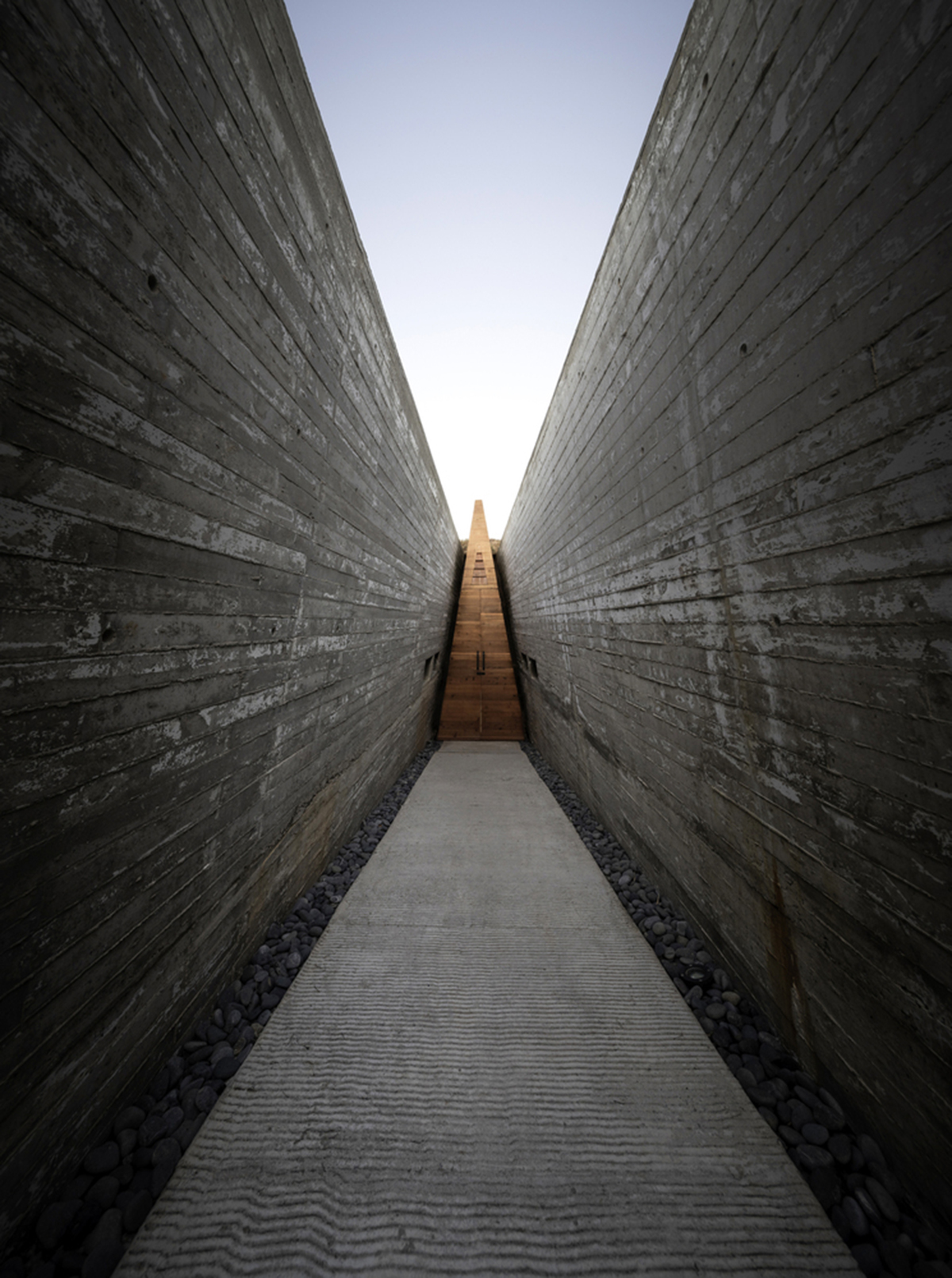

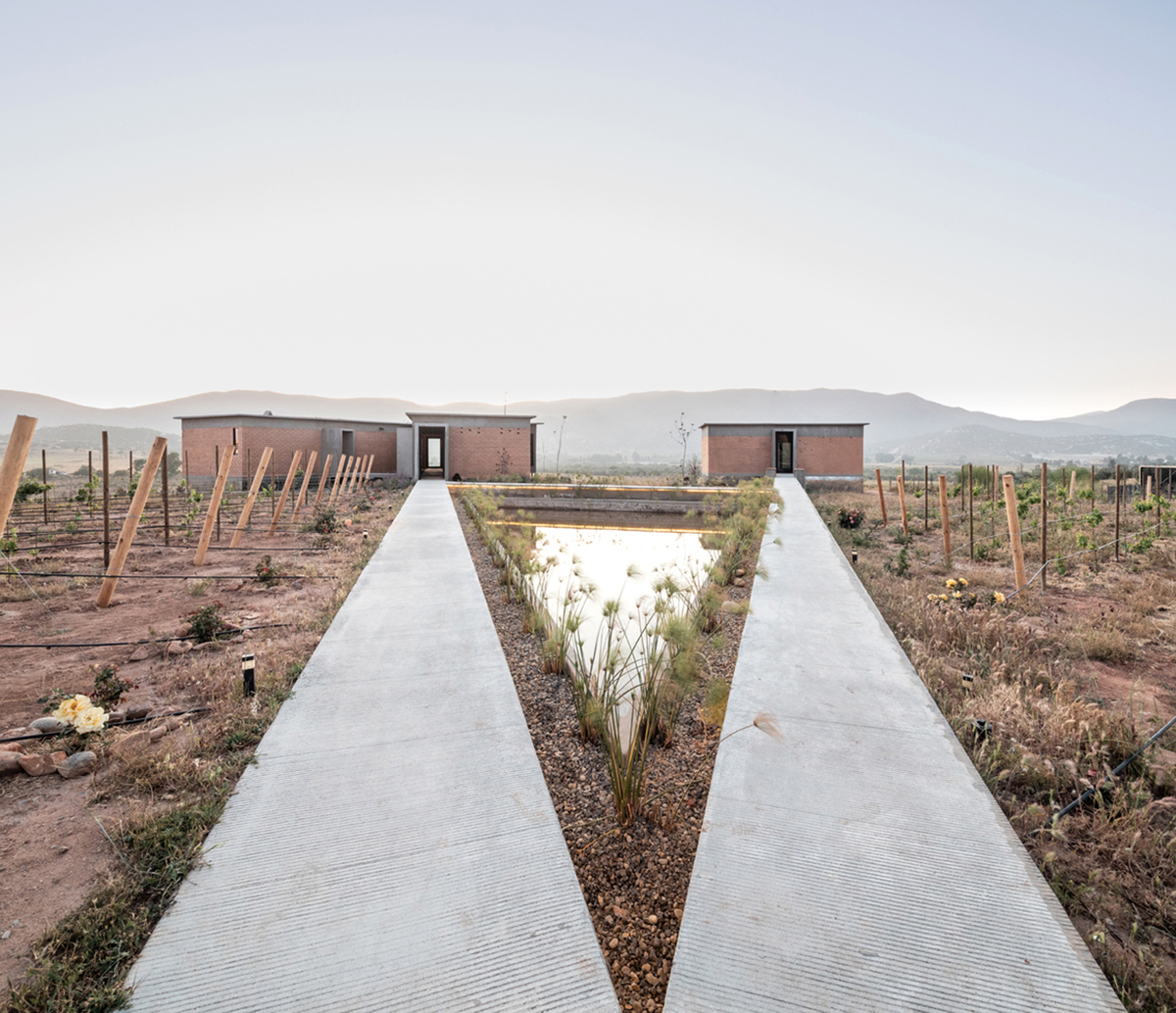
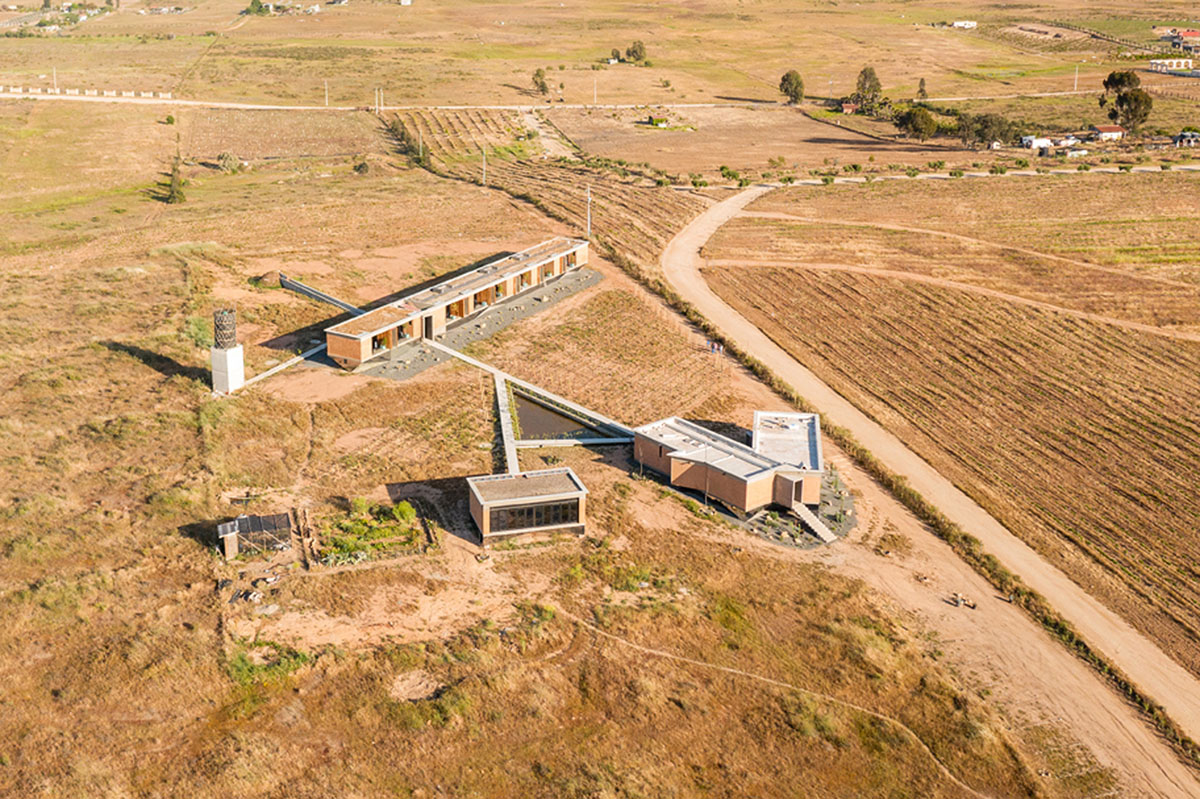
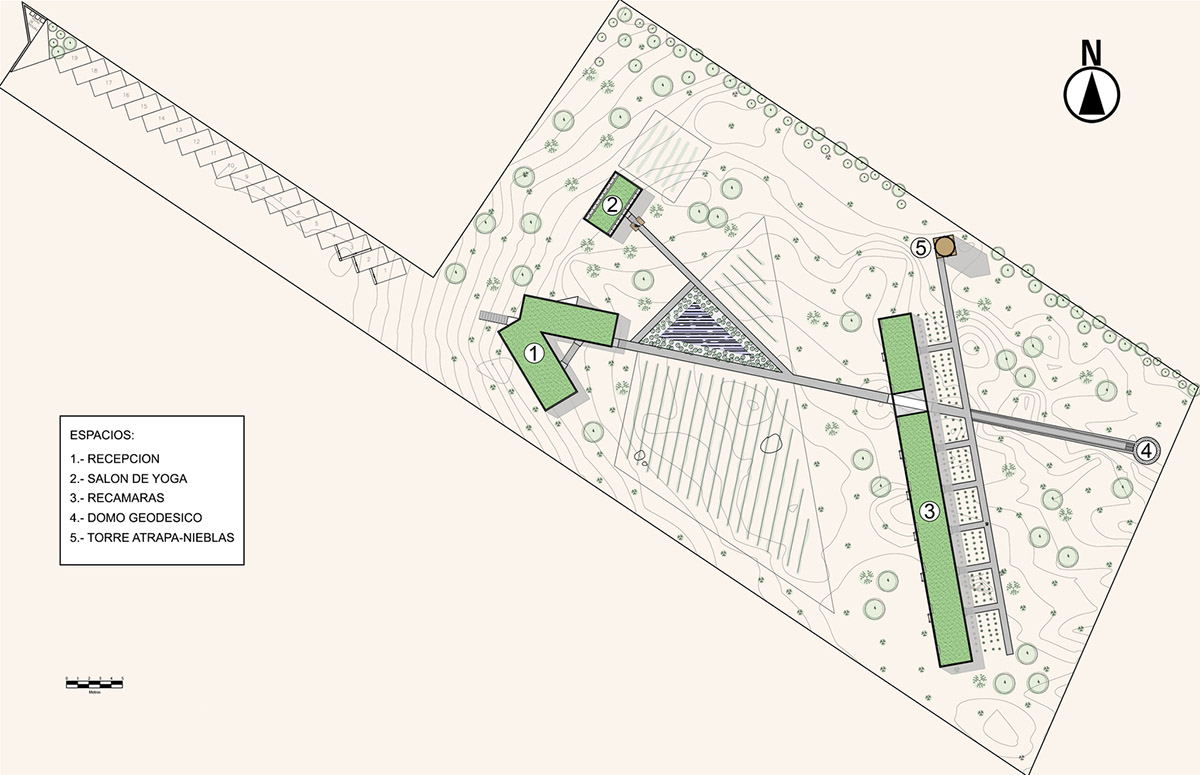

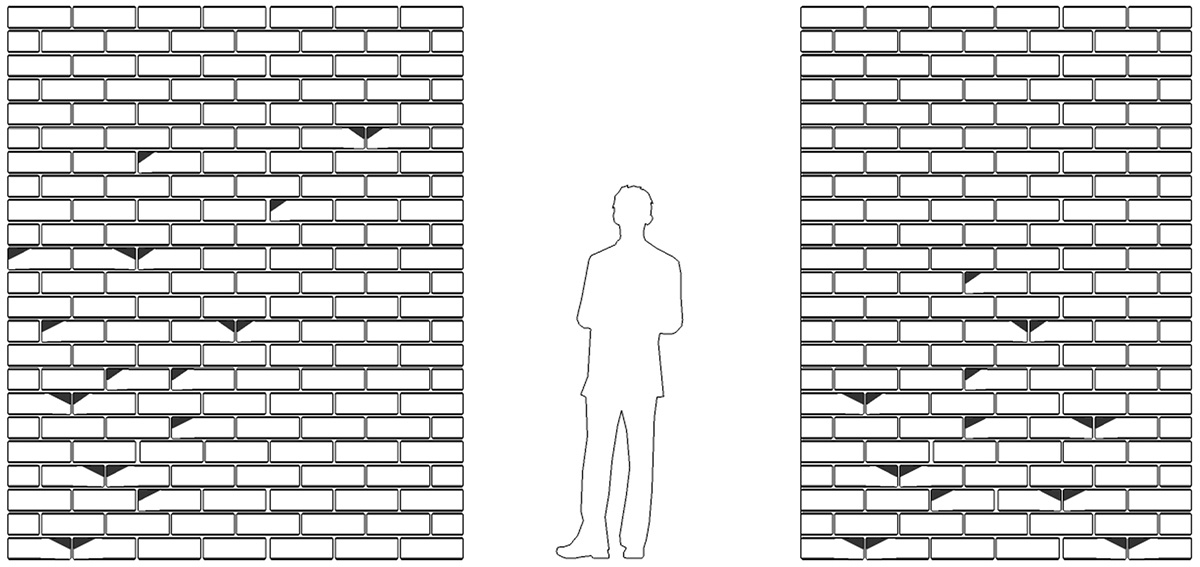
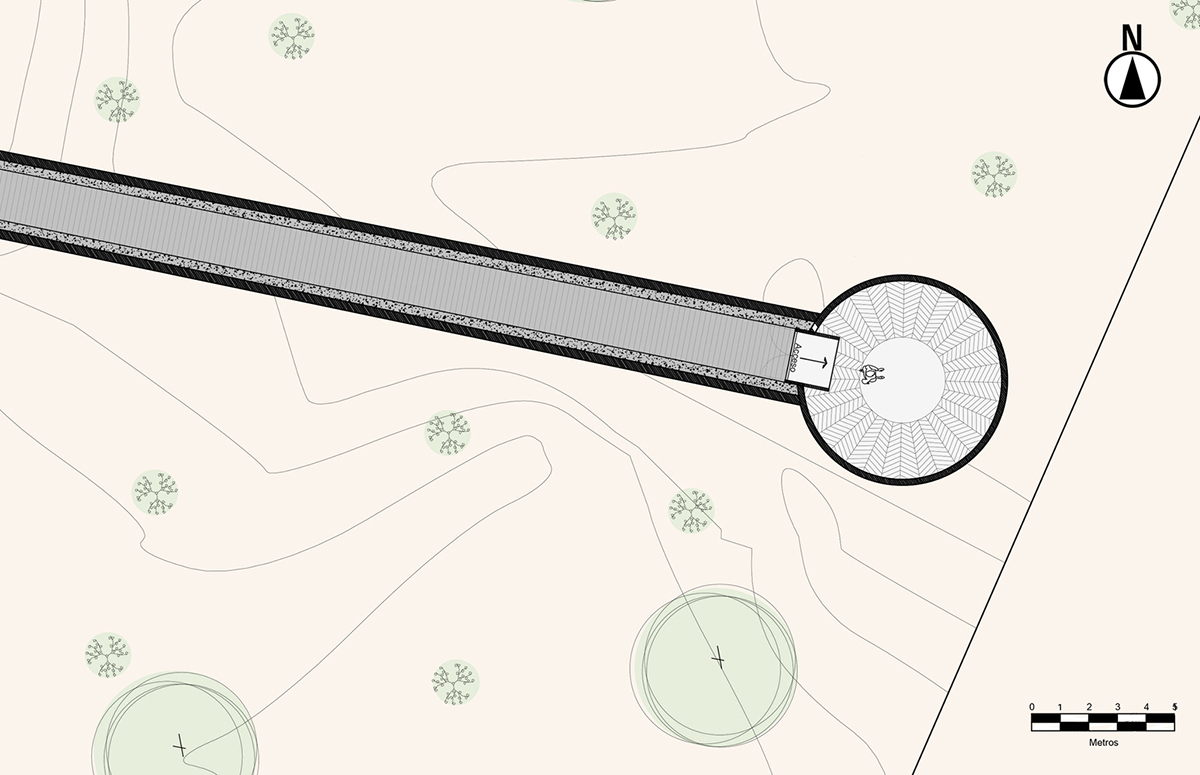
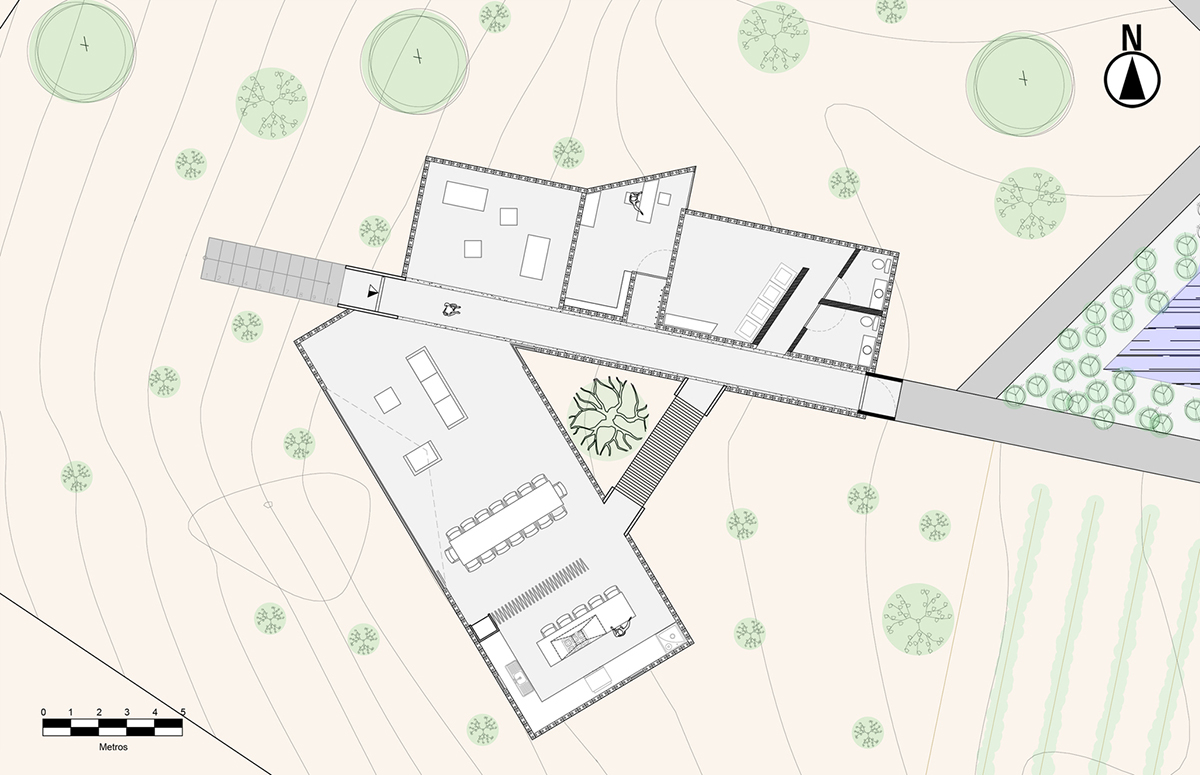

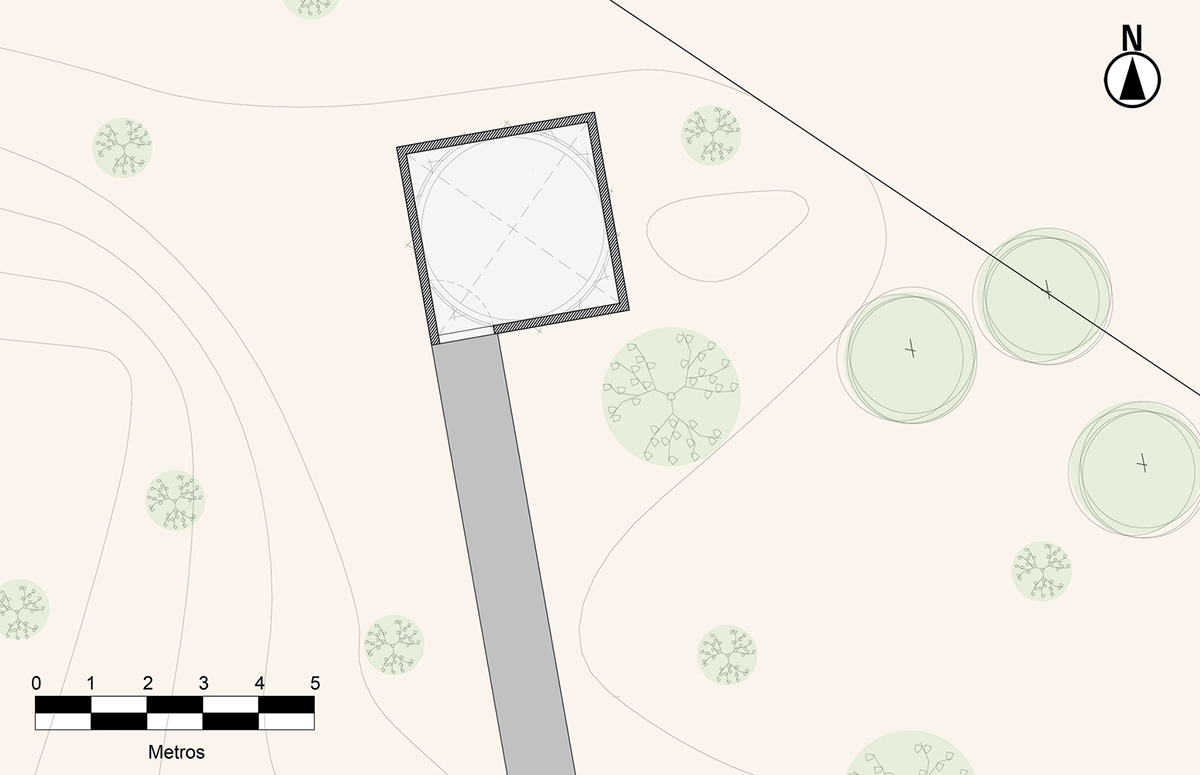

All images © José María González Villavicencio
All drawings © Santos Bolívar
> via Santos Bolívar